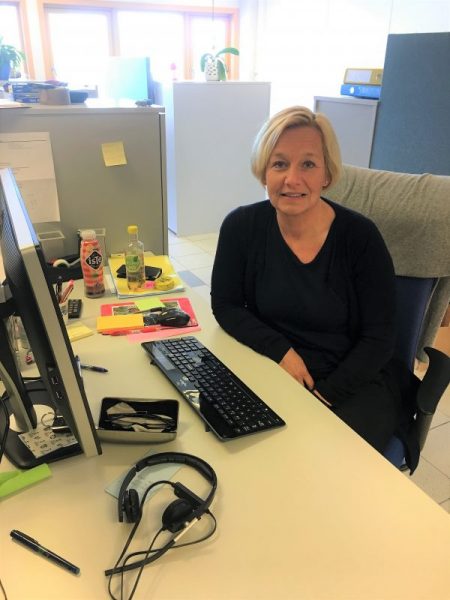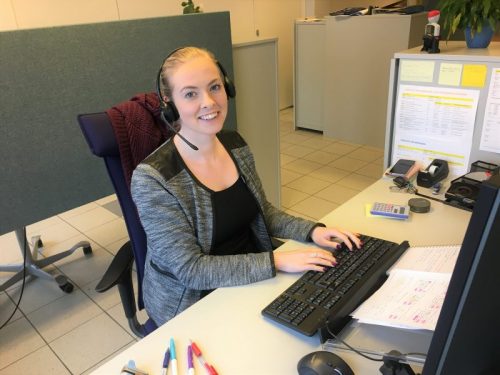The Norwegian University of Science and Technology (NTNU) and Visma has agreed to test letting a bot automatically process expense claims. The university is the first organisation to implement this functionality, financed by the NTNU digitalisation program (links to Norwegian content).

Ingrid Eide welcomes any digitalisation project aimed at making the workday easier for her and her staff. Photo: Ane Sunniva Tvete.
“We work closely with Visma in developing the solution to make it optimal for our needs, but also for other customers. The project has generated a lot of interest and we are of course proud to be the first using it,” says Ingrid Eide, Head of the Transaction Service Section at NTNU.
“We expect faster processing of expense claims, which should result in faster payouts to our employees”, Eide continues.
NTNU receives about 30,000 travel expense claims, 12,000 general expense claims and 3,000 mileage books every year. This means that about 45,000 claims each year can be processed by the bot.
A bot requires all processes to be standardised and ensures that all employees are treated equally, as the bot works from a defined set of rules.
1,000 travel expense claims in six weeks
The pilot phase started with three faculties at the university, but has since expanded to more departments including the central administration offices. So far, Anna the bot has specialised in people travelling domestically in Norway. The long term goal is that “she” will be able to handle all types of travel.
During the first six weeks Anna has processed more than 1,000 travel expense claims and approved about 30%. The remaining 70% are either travels abroad or claims that carry one or more formal errors. As the bot is still in a pilot phase, some challenges are expected and employees have experienced that the bot is very strict when it comes to the forms being correctly filled in.
Allows more time for handling complicated cases and also for counselling
At NTNU about 20 full-time equivalents are spent on variable salary and travels. An estimate is that about half of these are used to process travel expense claims.
“All employees in our department works both with travels and other claims. The bot helps us focus more on handling the complex travels, as well as giving us increased opportunities in prioritising tasks such as knowledge sharing, training and self-development”, says Ingrid Eide.
Pleased with the introduction of a bot

Frida Engelsen Haugen is pleased that Bot-Anna helps ensure more efficient processing of claims. Photo: Ane Sunniva Tvete.
Frida Engelsen Haugen (links to contact information, page in Norwegian) manages, among other things, the customer service phone for variable salary and travel expenses. She is pleased with the introduction of Bot-Anna and how the bot is always working, unless she is given a “break” to optimise her artificial intelligence.
“We notice that Anna is a hard worker. She writes comments to us on travel expense claims she has processed. She writes what’s wrong, or asks if the form is OK. We can see that she makes some mistakes from time to time, and we hope that people are patient in the beginning. It’s still a pilot phase and we will need some time to optimise Anna to best serve our needs,” says Haugen.
Bot-Anna is able to return travel expenses to the client if she sees something wrong (or something she thinks is wrong). If the claim is submitted again by the client without change, it goes straight to a human consultant in case Bot-Anna has misinterpreted something.
The bot is not perceived as a threat
Frida Engelsen Haugen does not feel threatened by the presence of a new super-employee who works around the clock.
“We appreciate the help Bot-Anna offers. There’s always enough work and I can imagine that our roles in the future will involve more counselling than processing. So I’m not afraid for my job,” says Haugen, who does not think Bot-Anna will ever be able to handle all travel expense claims.
“She is a machine and has a hard time exercising discretion. We can think, while she runs through a series of instructions,” says Haugen.
You can read more on Visma and artificial intelligence on https://www.visma.com/artificial-intelligence/

